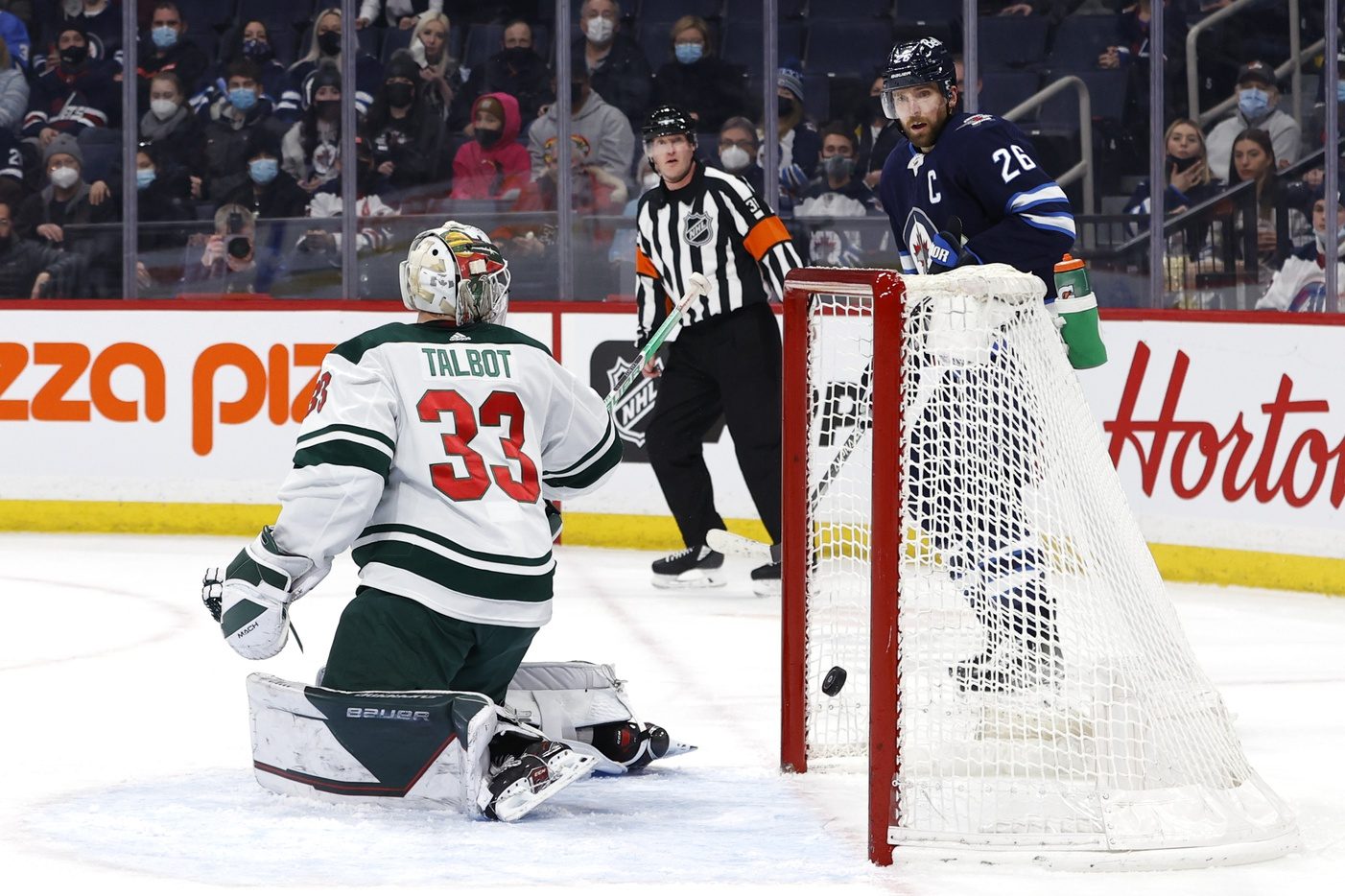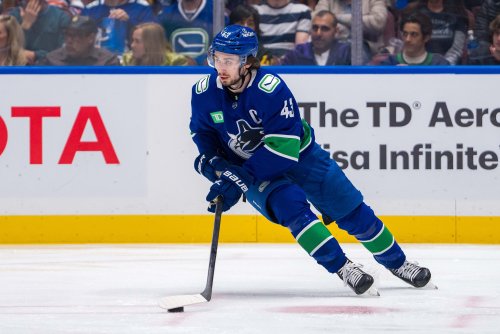
Hockey teams are loath to blame their goalies after losses. Players and coaches will always fall on the sword for their netminder. They could've defended better, perhaps, or offered them more goal support. The fixes are invariably on the five guys playing in front.
There are a few reasons for that. Goalies have a high-pressure job where the fan base scrutinizes every mistake, and no one wants to give their netminder more of that. Few players want to be the guy blaming others and not taking responsibility for their errors.
But the biggest reason may be that if a team's problem is defending, that's a much easier issue to fix than goaltending. As a coach, you can scheme to defend better, and as a player, you can work harder in your end. How does a coach fix a goalie, though? If anyone knew, the ends of Niklas Backstrom or Devan Dubnyk's careers wouldn't have been so ugly.
That leads us to the Wild's previously unrivaled starting goalie, Cam Talbot. In fairness, Talbot hasn't been the clear liability Backstrom and Dubnyk were at the ends of their Minnesota Wild tenures. He sports a decidedly winning record (19-11-1), an above-league-average save percentage (.910), and even made the All-Star Team. What room does anyone have to complain about him?
Minnesota made an implicit deal with Talbot when they gave him a 3-year, $9 million contract in Fall 2021. No one was under the delusion Talbot would carry the team. If that were the case, Talbot wouldn't have been a bargain. But he needed to be solid enough to clean up whatever a strong Wild defense couldn't keep from the net.
Talbot had ups and downs, but he held up his end reasonably last year. On April 23rd, Talbot had a .926 save percentage and had a Goals Saved Above Expected (GSAx) of 5.43. And that was with a late six-game slump which took these numbers down. He rebounded with a 1.78 GSAx in the postseason, too, and finished around middle-of-the-pack among goalies (including postseason).
You can point to a couple of short stretches where Talbot looked like the reliable bell-cow he was last season. Those have been too few and far between, though. Talbot now has 11 games where he's given up four or more goals, including six times over his past 11 starts.
At the beginning of the season, Minnesota still had chances to win despite a rough Talbot outing. They took the first three games where he gave up four-plus goals. A run like that can't last forever, though. Teams can only spot so much goal support. The Wild have now lost eight consecutive outings when Talbot surrenders four or more goals.
Admittedly, it's an arbitrary sample, but Talbot has a miserable .891 save percentage over his last 11 starts. The overall picture doesn't look prettier for Talbot, either. His GSAx now sits at -10.18, the seventh-worst in hockey this season.
Is that on the defense, though? The Wild would undoubtedly say so.
"We were soft in front of our net," said Dean Evason after a recent loss to Winnipeg Jets, where Talbot allowed five goals.
"That's just the way it goes when you're not playing a full, complete game," Jon Merrill said after losing 4-3 to the Ottawa Senators Tuesday night.
"We can't expect to come out here every night and score five goals," Jordan Greenway added after four pucks went past Talbot in a loss to the Florida Panthers. "We gotta lock it down on D to help ourselves out."
Indeed, the Wild aren't as dominant defensively as they've been for much of the past decade. But that fall is relatively light. They're still a top-10 team, allowing expected goals at 5-on-5 and in all situations. It's not the prime Mikko Koivu/Ryan Suter days of defense, but it's still a fairly light workload overall.
Then you start to wonder: If the defense is so bad, why isn't it letting down Kaapo Kahkonen? The Wild backup has surged since the new year, stringing together a .930 save percentage over ten starts. Much of that came while Talbot was out with an injury, a situation where he excelled last year, as well.
But unlike last year, when Talbot's return immediately sidelined Kahkonen, the young goalie is starting to make a push for minutes. They've more or less alternated starts, and Kahkonen is getting a high-profile test against the Toronto Maple Leafs.
Are the Wild just playing better defensively in front of Kahkonen?
The answer appears to be, Yes, but not by much. Of the 64 goalies with 500+ minutes, Kahkonen sees 30.3 shots per hour at 5-on-5 (26th), while Talbot sees 31.4 (39th). But this is the Wild, so many of these shots aren't high quality. Kahkonen sees the 18th-fewest high-danger chances per hour (7.8) while Talbot is slightly behind at 23rd (8.0).
When those high-danger chances roll in, they're both vulnerable. Talbot's save percentage on these chances (.819) is actually better than Kahkonen's (.806), but they're both in the bottom third of the league.
The difference is that when the defense is holding up their end of the deal, Kahkonen's been unbeatable, and Talbot hasn't. Kahkonen has a large advantage in medium-danger save percentage, ranking 15th in the league with a .931 mark, as opposed to Talbot's 31st-place .913. Kahkonen is also money on low-danger shots, surrendering just three en route to a top-10 .985 save percentage. Talbot has allowed 12 of these softer goals, and his .963 mark on these shots ranks 42nd.
It's been a lingering concern since the moment he signed, but it's likely that Talbot, 34, might be heading down the same road of decline that previous Wild netminders traveled. Wear and tear racks up on goalies, as Talbot himself jokingly acknowledged to Mark Lazarus in an article on the topic, "[My knees and hips] already feel like they're 50. They'll feel like I'm 90 when I'm 50."
Is that falling-off-the-table moment here? And are the Wild ready to react to it accordingly? Minnesota has shifted to a goalie rotation, which is already a huge step from last year when a healthy Talbot was the unquestioned starter. The only time Evason interrupted the every-other-game alternation was when they started Talbot against the Cup-contending Florida Panthers. It's a pretty big clue that, at least until the last few games, Talbot's still Evason's go-to goalie in a big game.
Talbot can't hold that status much longer if even the slightest defensive drop-off leaves him exposed. It's hard to know whether Kahkonen can keep his play up over a long stretch or whether a trade for a goalie like Marc-Andre Fleury would solve their issues in net. But one thing's for sure: If Talbot can't adapt to his team, or if he's losing to Father Time, then riding him like Minnesota did last year isn't an option.
Think you could write a story like this? Hockey Wilderness wants you to develop your voice, find an audience, and we'll pay you to do it. Just fill out this form.







Recommended Comments
There are no comments to display.
Join the conversation
You can post now and register later. If you have an account, sign in now to post with your account.
Note: Your post will require moderator approval before it will be visible.